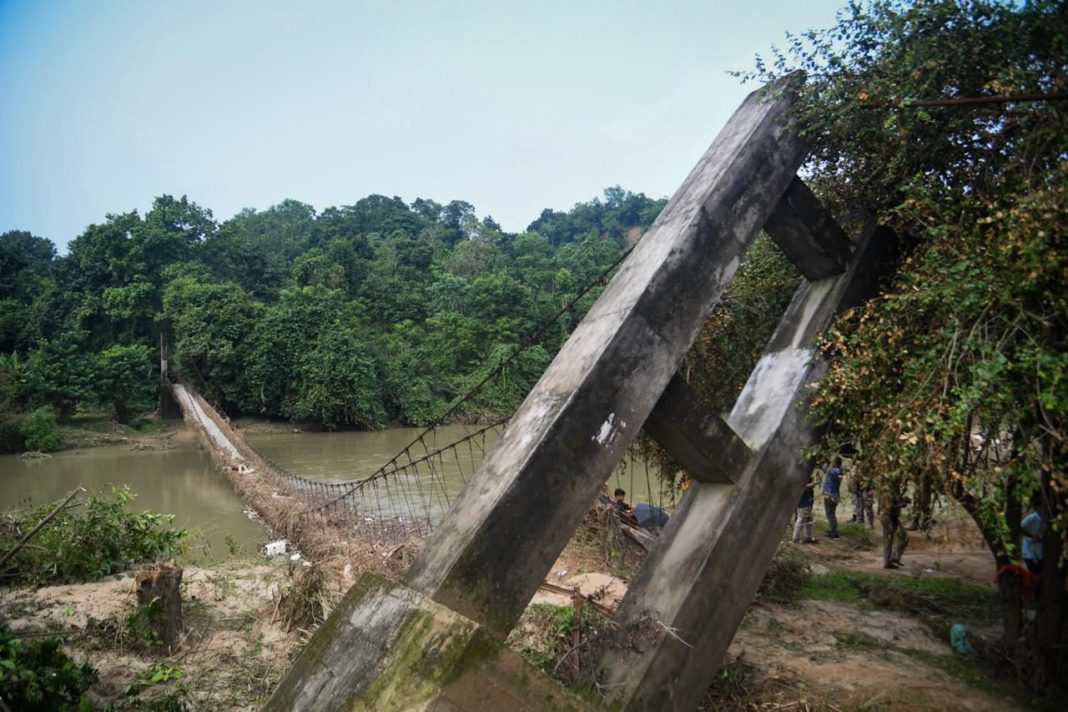ROOPAK GOSWAMI
Shillong, Oct 10: Meghalaya, known for its lush landscapes and heavy rainfall, is no stranger to the devastating effects of landslides.
But while landslides grab headlines, another significant issue often goes unnoticed—soil erosion, a critical driver behind many of these disasters.
In a recent study published in Environment, Development, and Sustainability, researchers from the National Institute of Technology(NIT) Meghalaya have revealed that soil erosion in the state is not only widespread but is also directly contributing to the increasing frequency of landslides. The study highlights that the region’s average soil erosion rate stands at 14 tons per hectare annually, with steep areas experiencing losses as high as 5871.32 tons per hectare each year. These numbers are not just alarming—they’re dangerous.
The reseearch was carried out by Mr. Badavath Naveen who is doing PhD in this area of research under the guidance of Dr. Smrutirekha Sahoo.
The study by utilizing the Revised Universal Soil Loss Equation (RUSLE) within a Geographic Information System (GIS) framework, provides a comprehensive assessment of soil loss across Meghalaya’s diverse landscapes.
Soil erosion plays a key role in destabilizing slopes. The removal of the topsoil—rich in nutrients and held together by vegetation—weakens the ground’s ability to absorb water. This leads to increased runoff, which washes away even more soil and sediments. Over time, this destabilization creates a fragile foundation, making landslides inevitable during heavy rains.
The connection between soil erosion and landslides is clear.
When soil erodes, it doesn’t just take away fertile land; it also strips the landscape of its natural defenses against landslides. Vegetation, which acts as an anchor for the soil, is lost, leaving steep slopes vulnerable to collapse.
With 66% of Meghalaya’s land facing moderate to high erosion risk, the consequences are evident in the regular landslides that disrupt lives and livelihoods across the state.
The Khasi Hills, one of the most affected regions, faces an erosion rate of 20.94 tons per hectare per year. This erosion is turning Meghalaya’s already challenging topography into a high-risk zone for landslides. Ignoring soil erosion means ignoring one of the primary causes of landslides in the state.
The research identifed open and degraded forest regions as the most erosion-prone, followed by agricultural land, range land, and bare ground. Areas with slope angles between 0 to 15 degrees and altitudes surpassing 1000 m experienced the highest erosion rates in this region.
High-intensity rainfall and steep terrain have significantly contributed to this erosion, with 66% of the area facing moderate to high erosion risk.
Researchers emphasize that soil erosion is not just an environmental concern but a public safety issue. The more soil that is lost, the higher the risk of landslides—and the more lives, property, and ecosystems are threatened.
Targeted conservation efforts, like reforestation and erosion control measures, could help protect the state from further erosion and reduce the risk of deadly landslides.
Researchers associated with the study say land managers and policymakers can prioritize areas requiring immediate attention in erosion control measures by considering the spatial distribution of soil loss.
“This information will aid in developing and implementing sustainable land use practices and preserving soil resources” they say.
The study makes it clear that without action, soil erosion will continue to exacerbate the state’s landslide crisis.




